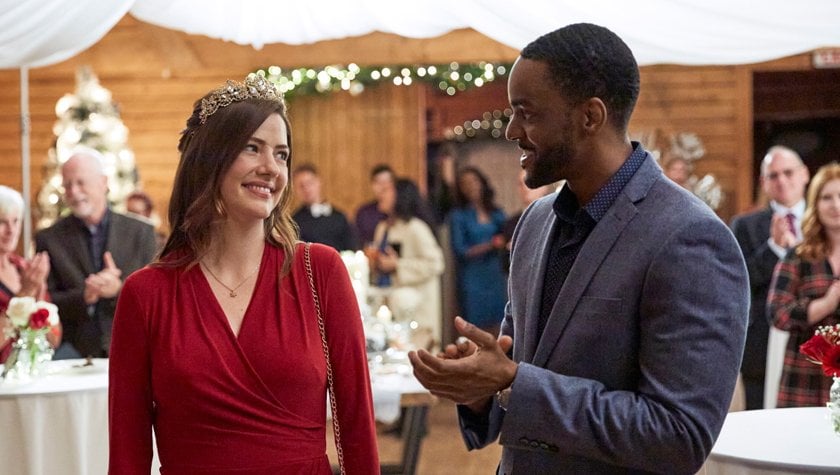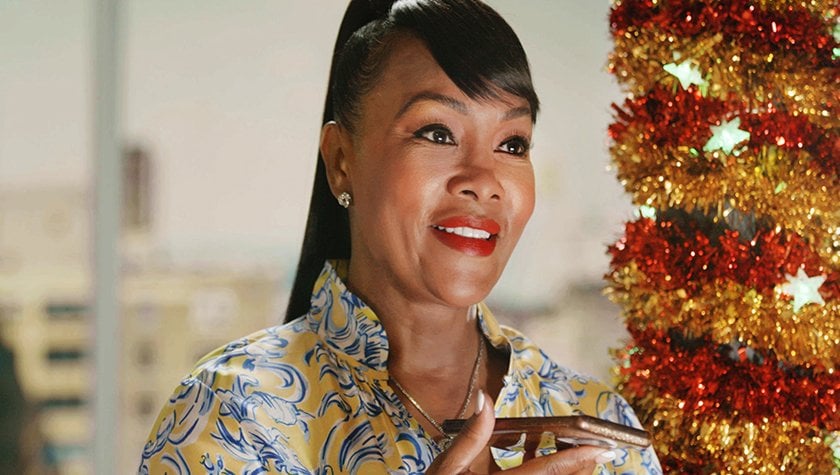Writing the 9-Act Structure for TV Movies
December 24, 2020
Most screenwriters are familiar with the three-act structure of a feature screenplay. The first act is the first thirty minutes (ish) that gets us as far as the protagonist heading off on their adventure. The second act is the main part of the film, lasting sixty minutes (ish) and taking us to the point just before the hero takes off with renewed vigor (act three) to achieve their goal and tie things up nicely. Or not, if you are making a movie in France.
This template works beautifully to give the audience the ultimate experience as they sympathize with the MC (main character) and take the journey to fulfillment. But little is written about the nine-act structure for TV movies. At least I could never find much advice online, and what is written, often has the idea left open to interpretation and that makes figuring out how to write a TV movie with commercial breaks even harder. Because I’ve been talking about writing Christmas movies, and most Christmas movies are bought by Hallmark and Lifetime, I decided to address the nine-act structure.
Having worked with producers who tell me exactly what they want, I’ve taken it upon myself to clarify what I’ve learned about writing TV movies, whether it’s a Hallmark Christmas movie, a Lifetime Woman in Peril movie (yes, that’s a genre) or an ABC Family movie. Keep in mind that producers’ opinions vary greatly, and you should always listen to the person who’s paying you. An example of this is that some producers want 95 pages for a Hallmark movie, some 105, so go figure.
The important thing to remember is that if there are commercial breaks in the movie, you must end that scene with a cliffhanger to ensure the audience does not change the channel or get distracted during the break. You need them to stick with the story and finish it. In a perfect world, the audience sits and listens to the commercials and decides to buy the products. The advertisers bank on some of us enduring the two minutes of ads and the network banks on us sticking with the movie to the end to see the next clump of ads, then the next, and the next. That’s why the movie has to be so compelling, you can’t imagine not watching the whole thing.
If you end an act with everyone saying how lovely the Christmas tree looks and smiling, it feels like a resolution and the audience might feel that’s good enough for them to leave the story. But if you end the scene with the tree falling over just before the big important client arrives to verify the MC knows how to throw a perfect Christmas party, that has us coming back after the commercial break to see if the MC gets that tree back up in time. Get it?
So let’s talk about the nine-act structure in detail. Final Draft makes it easy to separate the acts and gives you a fool proof method of formatting correctly with Script Elements in the Toolbar. Go to NEW ACT and END OF ACT and you’ll magically find the correct spacing, bolding and page change. Now let’s begin.
Act One is the longest. It goes to the 18-20 page mark and if you count a page per minute, it lasts about 20 minutes. This is the hook to get the audience invested in the story with no commercial breaks and should take us up to the inciting incident. The first act sets up the world, the MC, the problem, and introduces us to the main characters. In this act we should care about the hero.
The second act is shorter, but not the shortest. This act is about 12 pages long and takes the story to the point where the MC accepts the challenge and sets out on the journey. This is where you can introduce the romance, the challenge to resolving the problem, and the indecision of the MC to venture out. I like to think of the first two acts of nine as the first act in its totality of a three-act screenplay. Sheesh! Did you think you’d need so much math to be a screenwriter? I did not.
The third act is another eight to 10 pages of scenes that pop and amuse or terrify (depending on what you’re writing) with fun and games, conflict, and more fun and games. Don’t forget to end this act with a cliffhanger because it’s at the forty-minute mark in a movie that people get hungry or distracted if they aren’t fully invested. This is where something happens right at the end of the act to threaten the MC from achieving her goal, or the love interest finally shows some interest too. Boom! Now just try and leave this movie because you know you have to see what happens.
Act four builds the tension and conflict leading up to the movie’s midpoint. This is where the biggest plot twist will happen and where we are so invested in the story that there is no way we aren’t coming back after the commercial. It is another eight to 10 pages of escalating high stakes.
Act five is another eight to ten pages and includes the hero realizing that their skills are of no use in the situation they're in. They feel foiled and beaten, but they're still trying. Something happens on the final page of this act — and it doesn’t have to be a tree falling down. It could be a kiss or an almost kiss.
Act six is — you guessed it! — eight to ten pages of building conflict, obstacles and problems. This is where the MC believes she’ll lose her job as the Christmas Pageant coordinator because she’s really screwed up. Or the MC realizes that by trying to help get the kidnapped child back, he might have made things worse. End with a reveal that makes your audience want to scroll through the commercials had they taped the movie instead of watching it live.
Up the doom-and-gloom factor for the eight to 10 pages of act seven that boils to a high froth by the end of the act. Things look hopeless and your hero has given up. Things are worse than they were had the hero never gone on this journey in the first place. This is where the movie cuts to commercial with the MC drinking vodka from a paper bag in the alley (not a Hallmark movie!) or the family realizing that the dog is gone forever, and they need to go home and adopt a new family pet.
Act eight reveals new information that leads your MC to try something new. Your hero has renewed vim and vigor, and sets out with fresh optimism they didn’t have three pages ago to bring this thing home. Turns out this new idea and enthusiasm is just the thing to get the job done! This eight-page act ends with resolution looking possible.
Your final act is eight pages long during which the goal is reached, everyone is happy, and the hero is so relieved and joyous that they realize what they wanted all along was to move back to their hometown and marry their high school sweetheart. These pages are the cherry on the ice cream sundae and tie up all loose ends nicely. (Unless you’re writing for a movie in France that does not have an HEA.)
Some screenwriters do not include the breakdown of nine acts in their final draft of a feature even if they know it’s probably going to be a MOW, a term used to describe Movie of the Week, or a TV movie. It’s your choice whether to embrace this method or wait until you’re asked, but at least you’ll know how to do it when the producer asks for nine acts and you won’t have to cover up or spend all your time googling rather than writing.
Written by: Kim Hornsby
Kim Hornsby is a sold screenwriter of Christmas Romances as well as a USA Today Bestselling Author with 16 published novels in Romance and Suspense. A former Maui scuba diving instructor, Kim now writes overlooking a tree-lined lake in the Seattle area with two rescue muses as footwarmers. Her adaptation of her bestselling novel The Dream Jumper’s Promise won the Seattle Film Summit’s Grand Prize, as well as being optioned twice. Spring of 2022 will see Kim’s award-winning Short, CHAT, being filmed in Seattle with Kim at the helm as producer. Kim’s Website http://www.bit.ly/KimHornsby- Topics:
- Discussing TV & Film




